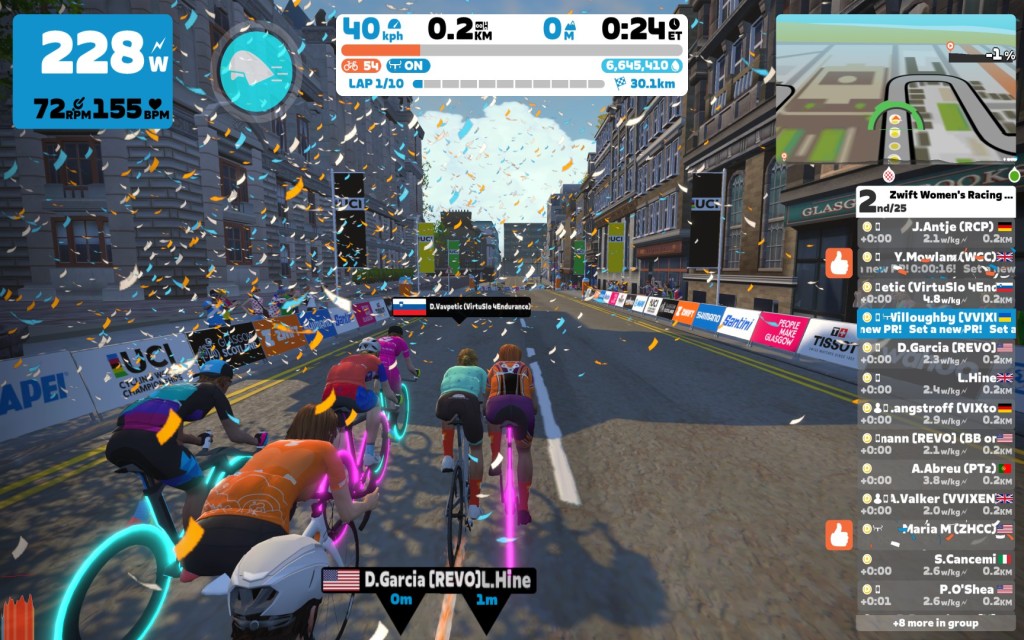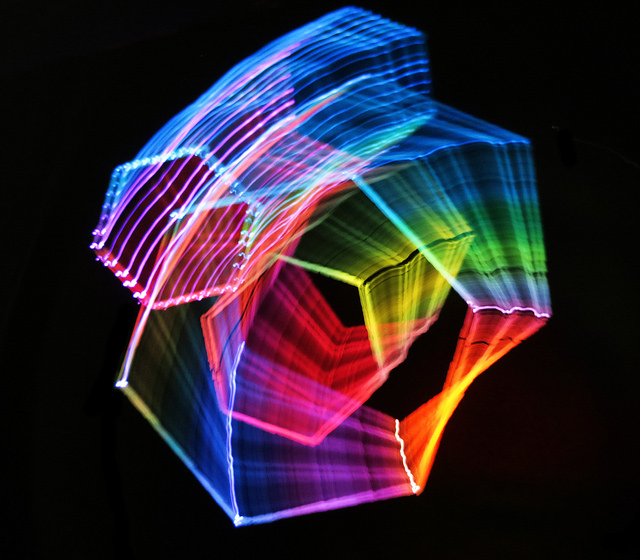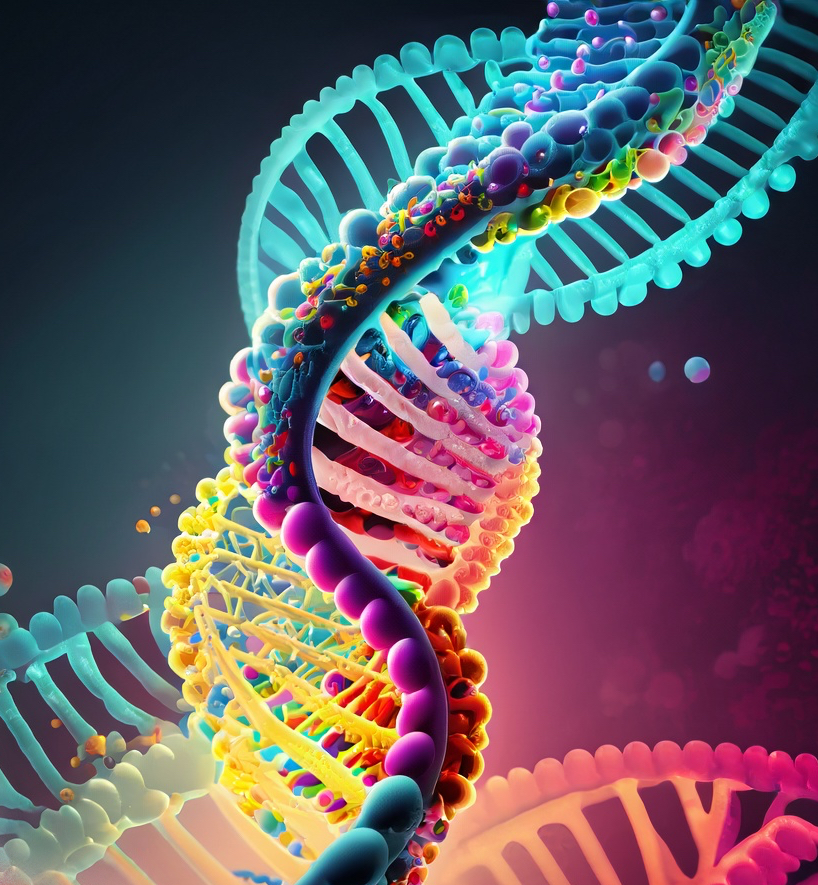In June I flipped my bicycle doing 30km/hour during a time-trial and landed on my head, giving myself a severe concussion. For the majority of people the symptoms of concussion lasts a couple of weeks, for some people the symptoms can continue for months and even years after the injury – known as Post Concussion Syndrome. Although my symptoms have certainly improved over the last several months, I am still having some problems as a result of the injury. I started writing this post about 6 months ago – I wanted to capture the various symptoms that I had because I was fascinated by it all – but it’s taken such a long time because writing something coherent is apparently quite complicated for a bruised brain. As I said at the time and many times since – “You don’t realise how much the brain does until it stops doing it.” Here are some of my experiences of MTBI and PCS.
What happened?
I was attempting to change my hand position from the top of the handlebars into the drops to enable me to be more aerodynamic and also to put out more power. I had done this before but only at lower speeds. Very carefully I tried to move my left hand from the top of the handlebars to the drop position. I didn’t manage to get it there, so decided to abandon the move and put my hand back up on the top. The decision to abandon the move turned out to be my undoing. In making the decision to abandon I apparently sat up before getting the hand back on the handlebar. The result of sitting up was that my right arm straightened causing the bike to steer hard left. At 30km per hour this caused the bike to flip, catapulting me over the top still travelling at speed. It probably would have looked impressive to see, but fortunately no-one else was on that stretch of road to see it or get collected in my accident. Fortunately I was actually going a fair bit slower than I could have been – I slowed down a bit because I was uncertain about the move and I also had a problem with my gears (got to have a silver lining).
I landed on the right hand side of my head and then scraped along the road taking quite a lot of skin off my right shoulder, arm, side, leg, and off the fingers on both hands. I was aware of and remember all the details of the crash – although I was bleeding and in pain from the road rash, I was aware I had hit my head and this was my primary concern. Also I was quite angry at my bike for throwing me off for the second time in a week!
Initial symptoms
The initial dizziness and sight problems meant my 1.5km trek back to civilisation was rather indirect as can be seen by the GPS trace from Strava below, which also shows some other interesting aspects of my journey. I sat by the road for a little while, but decided I needed to get back to civilisation and not interfere with anyone else’s race – a hit on the head and adrenalin from a crash don’t make for ‘sensible’ thinking! I could walk, although I was having some trouble bending my knee and obviously my newly removed skin was quite painful. I walked next to the road for a while, but I was feeling dizzy and had started to develop quite a headache at the back of my head. I soon began to feel very dizzy and thought I might pass out, so stopped again, although the Strava trace indicates I stopped for 90 seconds or so which I didn’t remember doing – so it might be I passed out briefly. The trace shows my heart-rate, speed, cadence and power with the heart-rate and the GPS trail particularly interesting post-crash. The green trail is the route of the time-trail (and also shows Phil cycling past me – I did see him at the time but obviously he didn’t see me!)
Sometime after I started walking back I became aware I couldn’t see properly. Previously I had an awareness that I could see ‘the texture of the helmet’ (I drew the image below a couple of days after the crash to try and capture the pattern I saw and the effect it had on my vision below), but it only became apparent to me whilst walking back that actually this pattern was very much a part of my vision and obscuring my view. I was also finding it difficult to work out which building I needed to head towards – I could see various buildings but not really distinguish them, and the reflections on the cars in the car park, but I couldn’t visualise which area I needed to get to – hence the not very direct route I took back.

The distinct pattern had gone by the time I got back, but I got a new visual distortion in the car on the way back home from the time trail (after being cleaned up a bit by some worried club-mates). Blue glass like prisms formed at the top of my vision creating an interesting pattern between the sky and the trees and seemed to be some artefact of the scene that I was looking at. I could clearly see the pretty prisms even with my eyes closed. These also faded after a few minutes. I’ve tried drawing them but I’ve not been able to represent them satisfactorily! Subsequently I realised these were probably caused by my brain having difficulty processing the high contrast between the dark trees and the brighter sky.
The second visual disturbance together with dizziness and a growing headache made it very clear that all was not well and a trip to A&E was going to be necessary.
The trip to A&E was a good thing – without the advice I received I would have done everything wrong. I saw a consultant who was a sports specialist who dispensed some pain killers, bandages, and some good advice. It was borderline whether I was going to be put in an MRI machine – but the opinion of a committee of consultants was that it was unlikely I had a bleed in the brain because the helmet was intact. I would still need close observation for 48 hours for symptoms that would indicate a bleed. Also it was clear I was going to be doing nothing very much for a while – at least a couple of weeks – in particular I would not be attending my PhD viva scheduled for less than 48 hours later. Oops! But I was also told not to use my phone, not to work, not to watch the TV, and to stop immediately doing anything that made my symptoms worse or made me feel tired. I should do ‘whatever I do on holiday to relax’.
Interestingly when we got back from the hospital the general symptoms were worse, and I found it difficult to look at objects and the normal clutter of a room – I found my eyes drifting to empty areas of wall. In the morning things were much worse. I couldn’t look at anything, especially anything that high contrast contrast colours or a busy pattern – and I spent the first day alternating between sleeping a looking at a pale yellow piece of cardboard! I was also very sensitive to sound. I also had some strange issues with colours – a kind of spatial synaesthesia and a feeling that I couldn’t name colours.
Symptoms following the concussion: Physical symptoms
I was warned by the consultant in A&E that I would have a really bad headache for quite a while – I did have a bad headache for a few months but it wasn’t debilitating. Much more of a problem has been the constant dizziness. The dizziness brings with it a feeling of lack of stability and wooziness. It was constant to begin with but after a few months it started to get better or worse depending on what I did. For example, walking around a lot, going in the car, doing too much cognitively, or going into a busy or noisy environment made me very dizzy – which then lasts until the next morning (or longer if I really overdid it).
I’m still having some issues with dizziness. Most of the time I don’t have it now unless I get cognitively overloaded – doing something complex or being in a busy environment. Doing complicated work (especially if it involves planning and visualisation) and contributing in meetings (tracking and making sense of conversation, having ideas and expressing them verbally) are still difficult and make me feel dizzy.
Symptoms following the concussion: vision and sound
In the first couple of days it became apparent that I had significant problems with visual processing and perception – difficulty looking at and interpreting things – especially those that were high contrast, patterned, moving, or complicated. I also had problems filtering out sound – I could hear everything and was very sensitive to loud and complicated (layered) sounds.
Taking the advice of the consultant I thought I would try to colouring in a colouring book – something I had found relaxing for decades, but I couldn’t do it at all. I could hardly look at the design, when I coloured I struggled to put the colour between the lines and I just couldn’t do more than one colour. It was also incredibly fatiguing – I couldn’t even attempt to do anything for more than a couple of minutes without getting very tired. For the first few days just sitting in the garden watching the leaves was about the limit of what I could do!
Because I was having so much trouble with seeing, I actually found myself relying a great deal on touch. I was using feel to understand things I was looking at or as a check for what I was seeing. I was a little frustrated at not being able to do ‘simple’ things like colouring in or reading, so I was extremely happy when I realised that I was able to build Lego! Building a couple of little buildings with Lego felt like a major accomplishment.
It was a couple of weeks before I was even able to be in the same room as the television and it was a few days before I was able to look at it directly and tolerate the sound. I had particular problems for many weeks after with movement, fast editing, layered sound and strange angles or viewpoints – particularly from above.
The visual processing was improving slowly, and the reading a little, but I was still unable to do colouring. I did, however, have a compulsion to draw. When I closed my eyes I got a constant stream of patterns and ‘visions’ in my mind and I wanted to try and capture these, but also I became aware that I couldn’t ‘visualise’ any more. I could ‘see’ in my mind places and things from my personal memories, but I couldn’t picture anything from my semantic memory. For example, I could describe an elephant, draw an elephant, but I couldn’t picture an elephant. I’ll talk more about visualisation in the ‘higher functions symptoms’ section below – being able to picture things in the mind has a surprising amount of impact on ‘thinking’.
In the real world I couldn’t ‘take in’ the whole scene. I found I was constantly locking on to one object in the view as I was walking along and would find myself continuing to stare at it as I walked past it. Along with the dizziness it made it so I couldn’t walk on my own in the outside world at all for a few weeks.
I have continued to have problems with sound and vision in ‘busy’ environments – those that are noisy or visually complex. A lot of environments are both. For example, I’ve had big problems in supermarkets. These are often busy with people moving around and noise, but also awful lighting and most significantly the patterns of products all lined up on the shelves. Even after I thought that some of my symptoms had subsided at home they would come straight back again in a supermarket (especially dizziness but also slowed thinking and speech). My reflex for visual complexity was to cover my eyes (or just one) and take everything much more slowly – I was walking very very slowly around the supermarket holding onto the shelves!
Tracking movement has been a fascinating area for symptoms. For quite a while I couldn’t look at anything that was moving – for example the moving pictures on the television or cars. But there were also more dramatic effects. The most interesting was if something is moving very fast or complicated like a spinning wheel or reflections on the lake – my vision freezes – so I see the object as stationary or fragments of the scene as frozen!). When I looked at a bicycle wheel instead of a blur I could see the spokes properly – like a frozen frame on a paused video. I also couldn’t watch ripples in the water of a lake and instead saw parts of the scene as frozen fragments – a bit like when a digital video feed breaks up because of a poor signal. The visual problems are some of the most interesting but most difficult to describe because they are so ‘abnormal’.
More recently (having gotten out and about a bit more) I’ve discovered the brain also apparently tracks people moving around and this is quite a cognitive challenge – it makes me dizzy being on a university campus or high street because of this!
Symptoms following the concussion: speech, reading, and writing
I’ve had quite a lot of problems related to speech, reading and writing. Although these are significantly better, I am still having some problems.
Understanding speech is one of the most basic areas of function where I have had problems. Initially with my visual problems I had to close my eyes in order to understand spoken words that were even slightly complex. Following speech and making sense of words has become much better, but I’ve still had problems more recently with tracking conversation with multiple participants and understanding new information and concepts. I’ve also had problems with my own speech – including difficulty finding words and constructing sentences – symptoms that have been worse under higher cognitive load. Interestingly once I have ‘found’ a word once then I have no difficulty finding it again.
Reading has been quite a significant problem and I’ve still got some problems now. Initially I could barely look at writing because of the visual complexity. I could recognise the individual words – but if it was not simple language or a simple topic I was not able to process the meaning and would have to stop looking at it. With relatively simple text I could understand the meaning of a few words together, but I couldn’t read and make sense of sentences. Even when the writing was improving, anything that was badly written, poetry or complex was impossible to read. I still find it difficult to make sense of content that is badly written or complex and get dizzy if I read for long.
I also had some problems with writing. Apart from being much more verbose than normal (common with a hit on the front of the head apparently), I’ve had some problems with mixing up words when typing – usually typing a different word that sounds similar to the intended word – but not directly homonyms. For example, typing ‘surface’ when thinking ‘service’. Another thing I have experienced, which is apparently common with a hit to the right side, is making and being amused by word puns – this is quite out of the ordinary for me (and can be annoying for everyone else) but fortunately only lasted for a couple of weeks.
Symptoms following the concussion: Memory, higher functions, and emotional processing
Apart from a brief period just after the accident (where I don’t remember stopping for as long as the GPS said), I don’t think that I have ‘forgotten’ anything as such. For a couple of months I did have what I called a ‘random flashback memory’ where I would have intrusive memories pop into my mind randomly and unrelated to my activities at the time. These were typically memories of particular places and times from my biographic memory and sometimes accompanied by images. Although I don’t think that I have lost any of my biographic memory I do seem to have lost some memory of places in terms of navigation. I can’t remember how to get between places that I know and that previously I knew how to get from one to the other – but this may be more related to visualisation than memory as mentioned below.
As a visual thinker this ability to be able to picture things is very important. I was aware of how important this way of thinking is to me – but I hadn’t appreciated how significant it is – I’ve realised that visualisation plays a an important role in a number of activities for me. Without the ability to visualise I have difficult understanding new information – I picture things visually to make sense of them. I have found I find it difficult to understand new concepts without someone drawing out a picture for me now – and abstract ideas are particularly difficult. I’ve also found planning and navigation to be difficult as a result of not being able to visualise – when doing tasks I find it difficult to know where to start and just have to jump in and work it out as I go along – certainly not my ‘normal’ approach. I’ve adopted a ‘jump in’ and ‘big bang’ approach to things. I start cobbling stuff together – see how it fits better and then dismantle the bits that are wrong and but them back together better. And the same with navigation – I can’t plan routes or picture where I need to be going, so I just have to start walking and hope that I recognise where to go next based on memory or with the aid of GPS.
I’ve also had some issues with emotional processing – I was not sure if was to do with ‘self monitoring’ or some other intermediate processing, but the effect was lacking awareness of an emotion but still reacting to it anyway. I know I am experiencing an emotion by my reaction, not by any conscious awareness. For example, if someone says something that annoys me, I know I’m annoyed because I’m telling them off, or I’m upset because I’m crying, I’m happy because I’m smiling! This is very difficult to explain – but before I’d feel the emotion, consciously process it, and then react to it – but after hitting my head the processing part seemed to be missing! My emotions were a little bit odd from the day following the accident – I have been extremely calm about the accident – not at all upset – in fact slightly amused by the whole thing for months afterwards. I felt I was making a conscious decision not to process emotional information, but later on after I realised I might not actually be able to process the emotions in some way. The A&E consultant warned me that I was likely to feel very irritated as part of the concussion symptoms, but fortunately I didn’t have that, and was actually quite jolly for the most part!
How are things now?
One thing I’ve learnt from all this brain stuff is that quite a lot of ‘disability’ is your own perception of what you can do. I know I’m not able to do everything I could right now and I still get dizzy when I overdo things – but I’m not anxious about it. Things are getting better slowly even though sometimes they get worse.
It bothers me most that I am still unable to visualise, and I can’t hold more than a fleeting picture of anything in my mind. The lack of visualisation does have a big impact as mentioned, but I’ve still got the compulsion to draw and I hope that I can use that compulsion and creativity to help ‘fix’ the visualisation in the long term.

Oh, and do wear a helmet guys – without it I might not be here!












Leave a comment